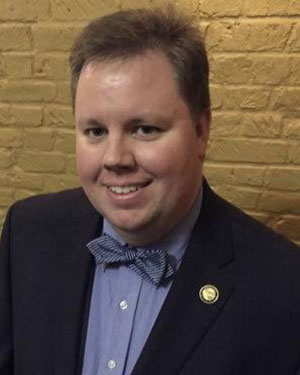In-Person Training
Applying cloud architecture patterns

What you'll learn, and how you can apply it
By the end of this two-day training course, you'll understand:
- The business drivers influencing companies to leverage continuous delivery, DevOps, and cloud-native architectures
- The unique characteristics of cloud infrastructure, including its trade-offs, and how architectures can exploit these characteristics
- How to work with an evolving cloud-native architectural pattern language, Bricks and Mortar
And you'll be able to:
- Articulate the high-level narrative of cloud-native architecture and why it is important to your business
- Articulate the paradigm shift involved in cloud-native architectural thinking
- Understand cloud-native architectural patterns, what problems they solve, the pros and cons of various implementation approaches, and the relationships between the patterns
- Apply cloud-native architecture patterns to various practice kata exercises to prepare for future use on real projects
As a software architect, confronting the cloud can feel quite daunting. From the start, you face an onslaught of decisions. Which public cloud provider should you choose? Are you even ready for public cloud, or do you need to focus on private cloud? And what does that even mean? Maybe you’re looking for a hybrid solution.
These questions are only the beginning. Soon you’ll be looking at IaaS versus PaaS, containers versus unikernels, servers versus serverless—the list goes on. Is there any way to make sense of all of the choices and cut through all of the hype?
Fortunately there is a way forward. There are clear architectural concepts and patterns that you can use as guideposts on your journey to the cloud. Matt Stine helps you understand six key architecture qualities: modularity, observability, deployability, testablity, disposability, and replaceability. These qualities enhance your ability to apply the cultural and engineering practices of DevOps and continuous delivery and exploit the unique characteristics of cloud infrastructure, helping you eliminate the great conflict between pursuit of business agility and system resiliency and ultimately enabling your survival in a new marketplace where speed is the primary competitive advantage and access to consumer services must be ubiquitous.
Through lecture and hands-on kata exercises, you’ll learn to create cloud-native architectures by applying a rich catalog of patterns that you will be able to leverage regardless of your choice of cloud provider or technology stack.
Outline
Day 1
Introduction (15 minutes)
Cloud-native architecture fundamentals (60 minutes)
- Business drivers for cloud-native architecture
- High-level overview of DevOps and continuous delivery
- Characteristics of cloud infrastructure
Socratic Q&A session (15 minutes)
Morning break (30 minutes)
Cloud-native architecture fundamentals: Part 2 (60 minutes)
- Six key architectural qualities of cloud-native architecture
Introduction to the Brick and Mortar pattern language (30 minutes)
Lunch (60 minutes)
Review and Socratic Q&A session (30 minutes)
Brick patterns: Part 1 (60 minutes)
- Externalized configuration
- Externalized state
- Externalized channels
Afternoon break (30 minutes)
Brick patterns: Part 2 (60 minutes)
- Runtime reconfiguration
- Concurrent execution
- Brick telemetry
Review and Socratic Q&A session (30 minutes)
Day 2
Applying Brick patterns through kata exercises (90 minutes)
- Form working groups
- Pick an architectural problem
- Design a cloud-native Brick
- Present for peer review
Morning break (30 minutes)
Mortar patterns: Part 1 (60 minutes)
- Service discovery
- Edge gateway
- Fault tolerance
Socratic Q&A session (30 minutes)
Lunch (60 minutes)
Mortar patterns: Part 2 (60 minutes)
- Event-driven systems
- Contract management
- Integration telemetry
Socratic Q&A session (30 minutes)
Afternoon break (30 minutes)
Applying Mortar patterns through kata exercises (90 minutes)
- Form working groups
- Pick an architectural problem
- Compose a cloud-native system
- Present for peer review
Wrap-up and Q&A
About your instructor

Matt Stine is the global CTO for architecture at Pivotal, where he spends much of his time helping customers develop cloud native application architectures. Matt is an 18-year veteran of the enterprise IT industry, 8 of them spent as consulting solutions architect for multiple Fortune 500 companies and the not-for-profit St. Jude Children’s Research Hospital. He is the author of Migrating to Cloud-Native Application Architectures (O’Reilly) and the host of the Software Architecture Radio podcast. Matt is obsessed with the idea that enterprise IT doesn’t have to suck. He focuses on Lean/Agile software development methodologies; DevOps; architectural principles, patterns, and practices; and programming paradigms in an attempt to find the perfect storm of techniques that will allow corporate IT departments to function like startups and create software that delights users while maintaining a high degree of conceptual integrity. Matt has spoken at conferences ranging from JavaOne to OSCON to YOW! and is an eight-year member of the No Fluff Just Stuff tour. Matt is also the founder and past president of the Memphis Java User Group.
Conference registration
Get the Platinum pass or the Training pass to add this course to your package.
Comments on this page are now closed.
Sponsorship Opportunities
For exhibition and sponsorship opportunities, email SAconf@oreilly.com
Partner Opportunities
For information on trade opportunities with O'Reilly conferences, email partners@oreilly.com
Contact Us
View a complete list of O'Reilly Software Architecture contacts
©2018, O'Reilly Media, Inc. • (800) 889-8969 or (707) 827-7019 • Monday-Friday 7:30am-5pm PT • All trademarks and registered trademarks appearing on oreilly.com are the property of their respective owners. • confreg@oreilly.com







Comments
There is no course book or preparation needed prior to attending. Matt wanted you to know that attendees will spend significant portions of the class working in groups to design solutions to architectural problems. Please come ready to meet some new colleagues and work together!
We look forward to seeing you at Software Architecture NY 2018!
Is there any preparation needed before attending?
Is there a course book, or handout for this class that I can access before the conference?